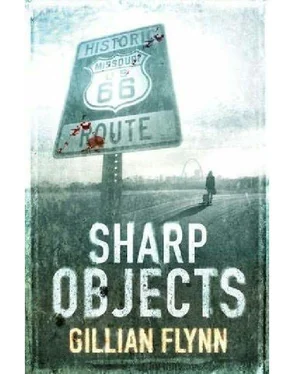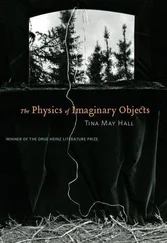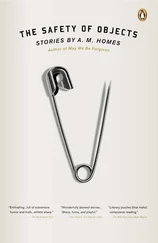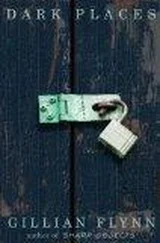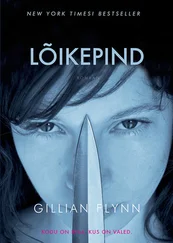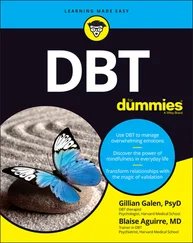Flynn, Gillian - Sharp_Objects
Здесь есть возможность читать онлайн «Flynn, Gillian - Sharp_Objects» весь текст электронной книги совершенно бесплатно (целиком полную версию без сокращений). В некоторых случаях можно слушать аудио, скачать через торрент в формате fb2 и присутствует краткое содержание. Жанр: Старинная литература, на русском языке. Описание произведения, (предисловие) а так же отзывы посетителей доступны на портале библиотеки ЛибКат.
- Название:Sharp_Objects
- Автор:
- Жанр:
- Год:неизвестен
- ISBN:нет данных
- Рейтинг книги:5 / 5. Голосов: 1
-
Избранное:Добавить в избранное
- Отзывы:
-
Ваша оценка:
- 100
- 1
- 2
- 3
- 4
- 5
Sharp_Objects: краткое содержание, описание и аннотация
Предлагаем к чтению аннотацию, описание, краткое содержание или предисловие (зависит от того, что написал сам автор книги «Sharp_Objects»). Если вы не нашли необходимую информацию о книге — напишите в комментариях, мы постараемся отыскать её.
Sharp_Objects — читать онлайн бесплатно полную книгу (весь текст) целиком
Ниже представлен текст книги, разбитый по страницам. Система сохранения места последней прочитанной страницы, позволяет с удобством читать онлайн бесплатно книгу «Sharp_Objects», без необходимости каждый раз заново искать на чём Вы остановились. Поставьте закладку, и сможете в любой момент перейти на страницу, на которой закончили чтение.
Интервал:
Закладка:
I was rotten. I didn’t approach the family, didn’t announce myself. I walked through their home and I spied, my head down in my beer like a shamed ghost. I saw Katie Lacey, my old best friend from Calhoon High, in her own well-coiffed circle, the exact mirror of my mother’s group, minus twenty years. She kissed me on the cheek when I approached.
“Heard you were in town, was hoping you’d phone,” she said, wrinkling her thinly plucked eyebrows at me, then passing me off to the three other women, all of whom crowded in to give me limp hugs. All of whom had been my friends at one point, I suppose. We exchanged condolences and murmured about how sad this was. Angie Papermaker (née Knightley) looked like she was still battling the bulimia that’d whittled her down in high school—her neck was as thin and ropy as an old woman’s. Mimi, a spoiled rich girl (Daddy owned acres of chicken lots down in Arkansas) who’d never liked me much, asked about Chicago and then immediately turned to talk to tiny little Tish, who had decided to hold my hand in a comforting but peculiar gesture.
Angie announced to me that she had a five-year-old daughter—her husband was at home with his gun, watching over her.
“It’s going to be a long summer for the little ones,” Tish murmured. “I think everyone’s keeping their babies under lock and key.” I thought about the girls I’d seen outside the funeral, not much older than Natalie, and wondered why their parents weren’t worried.
“You have kids, Camille?” Angie asked in a voice as thin as her body. “I don’t even know if you’re married.”
“No and no,” I said, and took a slurp of my beer, flashing an image of Angie vomiting at my house after school, emerging from the bathroom pink and triumphant. Curry was wrong: Being an insider here was more distracting than useful.
“Ladies, you can’t hog the out-of-towner all night!” I turned to see one of my mother’s friends, Jackie O’Neele (née O’Keefe), who’d clearly just had a facelift. Her eyes were still puffy and her face was moist and red and stretched, as if she was an angry baby squeezing out of the womb. Diamonds flashed on her tanned fingers, and she smelled of Juicy Fruit and talc when she hugged me. The evening was feeling too much like a reunion. And I was feeling too much like a kid again—I hadn’t even dared to pull out my notebook with my mother still here, shooting me warning glances.
“Baby girl, you look so pretty,” Jackie purred. She had a melon of a head, covered with overbleached hair, and a leering smile. Jackie was catty and shallow, but she was always completely herself. She also was more at ease with me than my own mother. It was Jackie, not Adora, who slipped me my first box of tampons, winking that I should phone her if I needed instructions, and Jackie who’d always teased me merrily about boys. Small huge gestures. “How are you, darling? Your momma didn’t tell me you were in town. But your momma isn’t talking to me right now—I disappointed her again somehow. You know how that goes. I know you know!” She let out a rocky smoker’s laugh and squeezed my arm. I assumed she was drunk.
“I probably forgot to send her a card for something,” she babbled on, overgesturing with the hand that held a glass of wine. “Or maybe that gardener I recommended didn’t please her. I heard you’re doing a story about the girls ; that’s just rough.” Her conversation was so bumpy and abrupt it took me a minute to process everything. By the time I started to speak, she was caressing my arm and staring at me with wet eyes. “Camille, baby, it’s been so damn long since I’ve seen you. And now—I look at you and I see you when you were the same age as those girls. And I just feel so sad. So much has gone wrong. I can’t make sense of it.” A tear trailed down her cheek. “Look me up, okay? We can talk.”
I left the Keene house with no quotes. I was already tired of talking, and I’d said very little.
Icalled the Keenes later, after I’d had more to drink—a to-go cup of vodka from their stash—and was safely segregated by phone lines. Then I explained myself and what I would write. It didn’t go well.
Here’s what I filed that night:
In tiny Wind Gap, Missouri, posters pleading for the return of 10-year-old Natalie Jane Keene were still hanging as they buried the little girl on Tuesday. A vibrant funeral service, at which the priest spoke of forgiveness and redemption, did little to calm nerves or heal wounds. That’s because the healthy, sweet-faced young girl was the second victim of what police presume to be a serial killer. A serial killer who’s targeting children.“All the little ones here are sweethearts,” said local farmer Ronald J. Kamens, who assisted in the search for Keene. “I can’t imagine why this is happening to us.”Keene’s strangled body was discovered May 14, crammed into a space between two buildings on Wind Gap’s Main Street. “We will miss her laughter,” said Jeannie Keene, 52, mother of Natalie. “We will miss her tears. Mostly, we will miss Natalie.”This, however, is not the first tragedy Wind Gap, located in the boot heel of the state, has withstood. Last August 27, nine-year-old Ann Nash was found in an area creek, also strangled. She had been bicycling just a few blocks to visit a friend when she was abducted the night before. Both victims reportedly had their teeth removed by the killer.The murders have left the five-person Wind Gap police force baffled. Lacking experience in such brutal crimes, they have elicited help from the Kansas City homicide division, which has sent an officer trained in the psychological profiling of murderers. Residents of the town (pop. 2,120) are, however, sure of one thing: The person responsible for the slayings is killing with no particular motive.“There is a man out there looking for babies to kill,” says Ann’s father, Bob Nash, 41, a chair salesman. “There’s no hidden drama here, no secrets. Someone just killed our little girl.”The removal of the teeth has remained a point of mystery, and clues thus far have been minimal. Local police have declined to comment. Until these murders are resolved, Wind Gap protects its own—a curfew is in effect, and neighborhood watches have sprung up over this once-quiet town.The residents also try to heal themselves. “I don’t want to talk to anyone,” says Jeannie Keene. “I just want to be left alone. We all want to be left alone.”
Hack work—you don’t need to tell me that. Even as I e-mailed Curry the file, I was already regretting nearly everything about it. Stating that police presumed the murders were committed by a serial killer was a stretch. Vickery never said anything of the sort. The first Jeannie Keene quote I stole from her eulogy. The second I yanked from the vitriol she spewed at me when she realized my phone condolences were a front. She knew I planned to dissect her girl’s murder, lay it out on butcher paper for strangers to chew on. “We all want to be left alone!” she yelped. “We buried our baby today. Shame on you.” A quote nonetheless, a quote I needed, since Vickery was shutting me out.
Curry thought the piece was solid—not great, mind you, but a solid start. He even left in my overfried line: “A serial killer who’s targeting children.” That should have been cut, I knew it myself, but I craved the dramatic padding. He must have been drunk when he read it.
He ordered a larger feature on the families, soon as I could scrape it together. Another chance to redeem myself. I was lucky—it looked like the Chicago Daily Post might have Wind Gap to ourselves for a bit longer. A congressional sex scandal was unraveling delightfully, destroying not just one austere House member, but three. Two of them women. Lurid, juicy stuff. More importantly, there was a serial killer stalking a more glamorous city, Seattle. Amid the fog and coffeehouses, someone was carving up pregnant women, opening their bellies, and arranging the contents in shocking tableaux for his own amusement. Thus it was our good fortune that reporters for this type of thing were out of commission. There was just me, left wretched in my childhood bed.
Читать дальшеИнтервал:
Закладка:
Похожие книги на «Sharp_Objects»
Представляем Вашему вниманию похожие книги на «Sharp_Objects» списком для выбора. Мы отобрали схожую по названию и смыслу литературу в надежде предоставить читателям больше вариантов отыскать новые, интересные, ещё непрочитанные произведения.
Обсуждение, отзывы о книге «Sharp_Objects» и просто собственные мнения читателей. Оставьте ваши комментарии, напишите, что Вы думаете о произведении, его смысле или главных героях. Укажите что конкретно понравилось, а что нет, и почему Вы так считаете.
